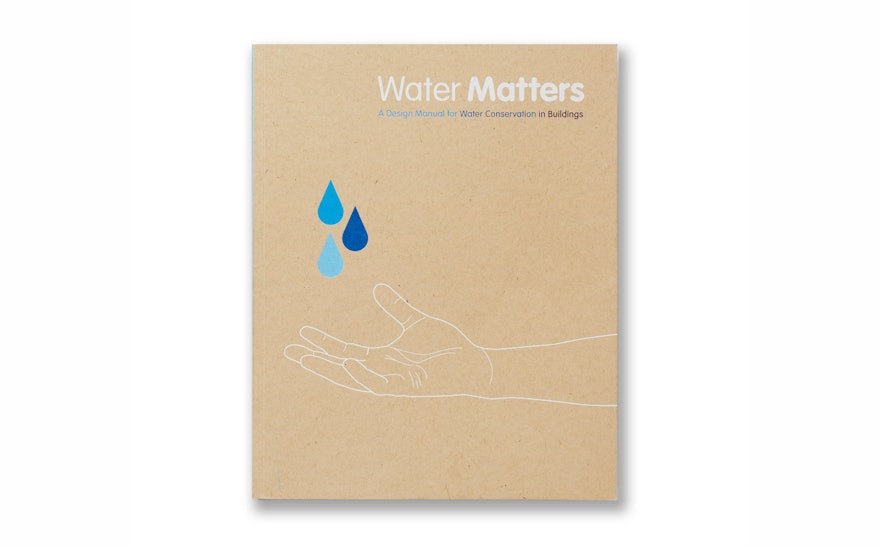Water is a precious resource in New York City. Famed for its gravity-fed aqueducts, the city’s water supply is remarkably reliable and known for its quality. However, the city faces growing demand, the continual danger of system shutdowns, and the cost of increasing energy consumption for wastewater treatment. To meet these challenges, PlaNYC 2030, the city’s official strategy for sustainability, has identified conservation as fundamental to protecting the water network, and the New York City Department of Design and Construction (DDC) has established comprehensive guidelines for efficient water use in buildings throughout the city.
Working with the DDC, Pentagram has designed Water Matters: A Design Manual for Water Conservation in Buildings. Using a bold and playful system of information graphics, the book presents the city’s recommendations for this important initiative in an engaging and accessible manner. The book has been selected for AIGA’s prestigious 50 Books/50 Covers awards.
Pentagram was approached by the DDC to help conceive a manual that clearly explained the very complex system of water supply and conservation in New York. The manual had to be used and understood by engineers and architects, as well as anyone with interest in the topic of water conservation. The challenge for the team was how to make the book easy to use yet convey a wealth of serious data on the topic.
The designers worked closely with the DDC team, including external architects and engineering consultants, to create an intelligent workflow and cohesive understanding of how the book should look and work. The book describes water delivery systems in great technical detail, presenting diagrams and charts that depict various strategies to increase the efficiency of water use in different building types (schools, offices, libraries, police precincts, health facilities, etc.) The designers chose these diagrams as an accessible entry point into the book’s reams of data, using color, typography and a mix of two-dimensional and three-dimensional elements to communicate banal information with a clear and lively approach.
A system of bright color is used to differentiate the various strategies, methods and technologies presented in the book. This color-coding organizes the book into distinct sections and helps the reader sort through the information quickly. The color has been paired with a system of two-letter codes that the DDC uses to identify groups of various technologies. These two-letter codes (for instance, “PF” for “Plumbing Fixtures,” “CS” for “Civil Systems,” etc.) can be used in combination to describe different strategies to increase efficiency of water systems in different building types. The codes appear in section headers, diagrams and text, and are accompanied by numbers keyed to specific technologies.
The book’s iconography is simple and dynamic, mixing bold two-dimensional graphics with photographic images of people and objects. (Members of the design team can be seen using household fixtures in several diagrams.) The designers developed an easy-to-use Strategy + LEED Level Key that rates system efficiencies on a scale of one to five water drops. In keeping with the idea of conservation, the book features an unbleached cover and recycled papers that add to the tactile quality of the piece. The book’s principal fonts are the friendly VAG Rounded and Helvetica Textbook.
For the DDC, the process of designing Water Matters helped organize an incredible amount of complex data into an invaluable resource for the city. The book is the ninth in the DDC’s ongoing series of manuals dedicated to promoting greater environmental responsibility. (Pentagram previously designed Active Design Guidelines, a manual to help architects design buildings that promote physical activity.)
Water Matters is available for download in PDF format here.

